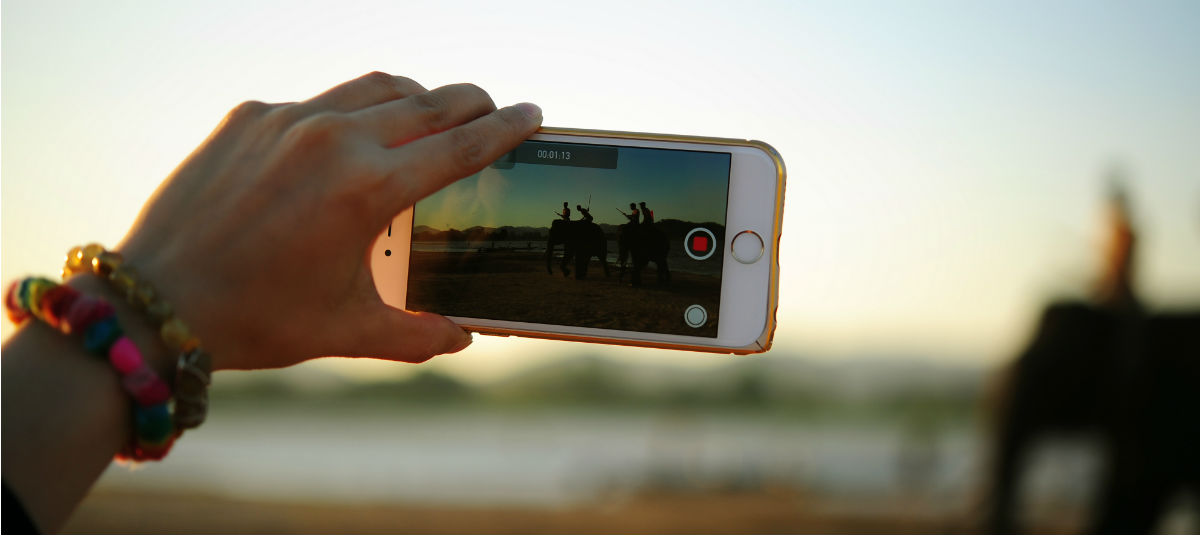5 Video Tips to Rock Nonprofit Digital Storytelling

For fundraisers, a compelling video is a critical way to incite action. This powerful tool cuts through noise and clutter, grabs attention, and can showcase your impact in a way that deepens your connection with current and potential donors.
In fact, a recent Google study has found that 57 percent of people who watch a video go on to make a donation. Yes, you read that right—over half!
You’ve likely even noticed that your video content tends to outperform other types of posts on social media. People love video content for its digestibility, especially when it’s accessed from a mobile device. In their Mobile Video: Exposed study, the Streaming Video Alliance found that 25 percent of smartphone users watch more than two hours of video on their smartphone each week.
To help you create a regular cadence of video content for donors and potential supporters, here are five practical tips. With these things in mind, you can create video that builds your relationships and helps you to raise even more funding.
1. Tell Inspiring Stories
It’s not hard to understand why storytelling is so popular—it’s how we communicate as humans! Research studies have found that personal stories and gossip make up 65 percent of our daily conversations. When coupled with the viral and attention-getting potential of video, storytelling remains the most compelling and engaging type of online content out there for nonprofits.
Nothing can compete online with a well-told story in video format. The statistics don’t lie: four times as many people would rather watch a video about a product or service than read about it. Video is the most engaging form of online content across all social media channels. Online Americans are exposed to more than 100,000 digital words daily—and 92 percent of these consumers would prefer to consume those words in storytelling form. Moreover, social video storytelling was the most popular brand content in 2016 and remains poised to top the list again in 2017.
Nonprofits that do well in this department often share a mix of long-form, professionally shot and edited videos and in-the-moment snapshots about their work in the field.
To collect stories on video, it can help to think like a news journalist. Consider all of the events and happenings on your community’s radar (including your own) and determine what video clips you can capture to augment the story for your larger audience.
An excellent example of a long-form storytelling video that inspires donations comes from the Chronicle Season of Sharing Fund‘s “Meet Bobbie and Ia.”
https://www.youtube.com/watch?v=WQr_nn0f8lw
In this video, we hear the inspiring story of Bobbie, a homeless woman helped by the Chronicle Season of Sharing Fund to become more empowered and hopeful. Viewers also meet Ia, a person who does not have a lot of money but still gives to the cause, and she tells us why. The women are both real people, sharing their actual heartaches, struggles, and victories in a very relatable way that makes the viewer want to watch until the end—and get involved!
2. Grab Attention
After creating your video, be sure to directly upload the video to each individual social media platform. Based on my own experience consulting with several dozen nonprofits on social media best practices, and managing dozens of Facebook Pages, this tactic is considerably more effective than posting an outside link to the video. When you directly upload a video and share it to Facebook, Twitter, and Instagram, your video will automatically start playing when it comes up in the newsfeed or update stream.
Because videos play automatically but silently until the viewer clicks on them, you need to grab attention visually in that first frame. Consider what you can do to entice people to click on the sound button and watch the full video. Need some ideas for fantastic nonprofit videos that catch the eye and make you watch until the end? Check out the DoGooder Awards on YouTube. Classy also has a fabulous free resource, The Guide to Nonprofit Storytelling.
3. Bring People “Into the Kitchen”
Once, my husband and I went out to a very nice dinner. When the owner of the restaurant came over to our table to ask us how we liked the food we gave a raving review. Thrilled by our commentary, he offered to introduce us to the chef. After giving our thanks, the chef gave us a brief tour of the kitchen. There, we saw how things actually worked, and appreciated it all even more. Needless to say, we’re now lifelong customers of that particular restaurant.
How can your organization bring people into your “kitchen” using video? How can you make them feel special and more connected to your organization? The answer: showcase your organization’s personality.
Post brief, behind-the-scenes videos of your organization at work. Don’t worry if it’s not professionally produced. All you need is a smartphone and a steady hand. An example of this is an Instagram video from UNICEF in which the staff assemble Trick-or-Treat for UNICEF boxes. This video has the added bonus of asking us to “stay tuned” to find out who its celebrity ambassador will be at the event.
Nonprofits of all sizes can post videos of the small things they do every day like answering questions from visitors or people on the phone, planting a tree, giving away toys, or helping with homework. Events happening right outside the office doors or in the community are also fodder for short, in-the-moment videos. Human Rights Campaign uses Instagram to highlight anti-LGBT and other protests that go on every day in front of their headquarters.
Another example is an eye-catching, beautifully shot behind-the-scenes video created by National Geographic photographer Michael Yamashita.
What’s in Michael Yamashita’s #FlipsideSport? @yamashitaphoto @loweprobags @thephotosociety #videogram #cameragear #stopmotion #lowepro
Using a series of still photos, the viewer sees shots of the equipment used on a typical National Geographic shoot, giving a behind-the-scenes glimpse into the people who create the beautiful photographs for the magazine.
4. Show Impact
Your donors made the decision to give money to your organization. This imparts a responsibility on your nonprofit to use the money wisely and responsibly and to communicate the results you achieve. Storytelling with video provides an intimate way to communicate impact and show potential donors and supporters that your organization is a good steward of funds.
For example, The Greater Boston Food Bank shares videos on its Facebook page about the people that they serve and the hardships they are struggling to overcome. Dan’s Story shares one family’s experience with the Food Bank, using emotional storytelling and vivid imagery to draw in the viewer.
When you use video to showcase real stories from real people who have benefited from your work, it helps supporters connect with your cause. The organization Denver Rescue Mission regularly posts interesting, unique videos on social media of real people sharing their stories. New Life Program participant Matt shares the story of his transformation on the DRM Facebook Page.
Along with showcasing impact, you can use video to thank and acknowledge donors and supporters in a more personal way. Whether they donate to a particular campaign, help you reach a fundraising goal, attend an event, or even just follow you on Facebook, consider how video can help deliver thanks in a way that delights.
For example, Children’s Hospital Colorado Foundation created a video called, “Thank You for Supporting Kids Like Me.”
Posted on YouTube, it features several children who received treatment at the hospital. The children express their sincere thanks to the doctors, staff, and people who give to the hospital. I dare you to watch these children share their stories and genuine appreciation for the hospital staff with a dry eye!
5. Use a Mix of Amateur and Professional
There are two main categories of nonprofit video: amateur and professional.
Professional videos are generally longer in length and formally staged and shot. These videos involve significant preparation and are created by a professional videographer or filmmaking studio, usually incorporating smooth edits, transitions, voice-overs, music, and more. Professional, longer-form videos are best used at gala fundraising events, on your YouTube channel, in your major gift solicitation materials, and on the donate page of your website.
Amateur videos are created by staff members, volunteers, clients, and other stakeholders—people without formal experience or training. These videos work best on social media channels where short (thirty seconds or less), spontaneous videos rule.
With the proliferation of smartphones, tablets, handheld video cameras, and micro-video apps such as Snapchat and Instagram, we all have the capability to be mini filmmakers. No matter your budget, your staff capacity, or your technical knowledge, your nonprofit can use this tool to share and connect.
Whether professional or amateur videos will be more effective for your nonprofit will depend on your marketing goals, budget, and audience. In my experience, on social media, people will not watch a long, five-minute video on the history of your organization. They often will not even watch a thirty-second video all the way through (Facebook counts a full video view as someone who watches a video for just 3 seconds).
It is certainly true that in the digital space, people gravitate toward authentic, emotional stories from real people in a shorter, more informal format. However, I do advise incorporating some long-form video with your short, in-the-moment video content. Long-form video is best used on YouTube and Vimeo, where users are accustomed to watching longer videos, and they often stay to watch multiple videos at a time. Your nonprofit could also use long-form video content on your blog and during your events, to tell a more complete story and give a clear picture of your impact and your work.
Julia Campbell is the author of “Storytelling in the Digital Age: A Guide for Nonprofits,” now available for order. Sign up at her website to get your free chapter, and more nonprofit storytelling and social media resources.

The Guide to Nonprofit Storytelling



